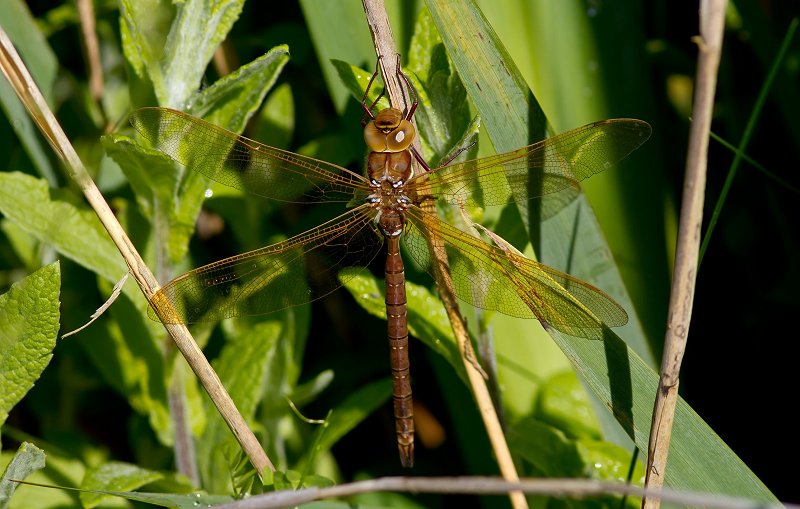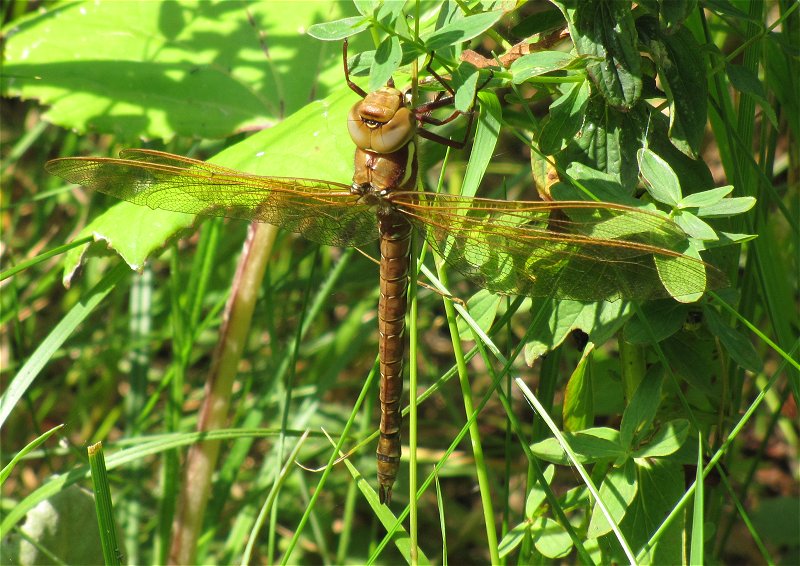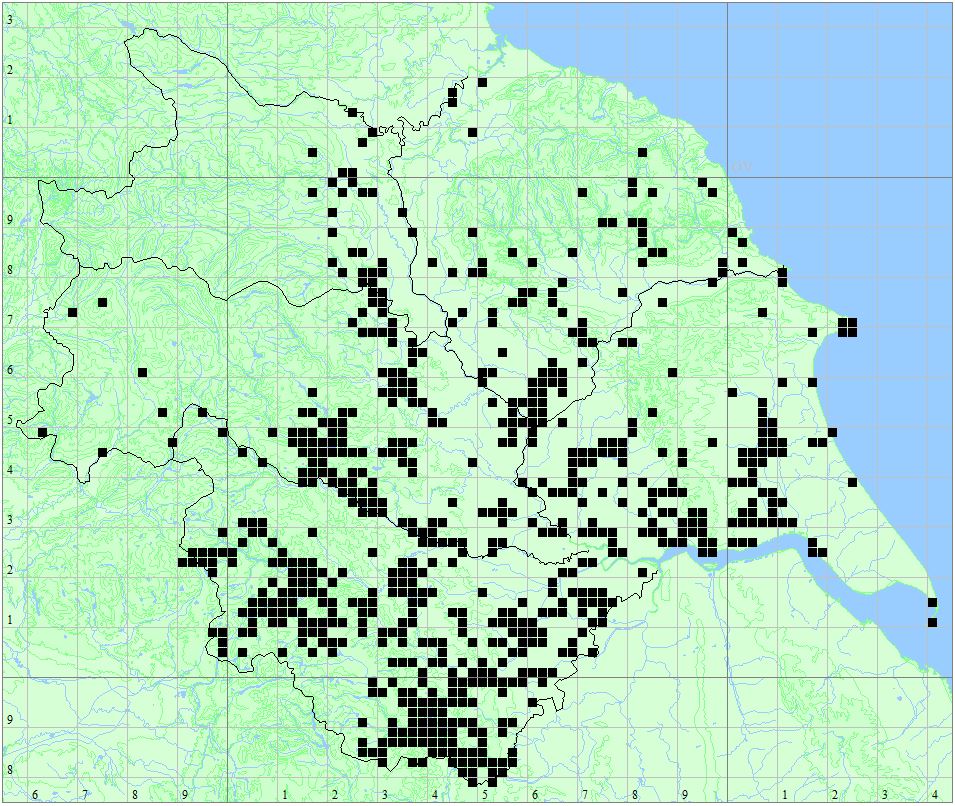<-Previous Species – Next Species->
Length
73mm, Wings 102mm.
Males
Thorax brown; abdomen brown with bright blue spots at sides; wings characteristically honey brown colour; legs pale brown.
Females
As males except blue spots on abdomen replaced with yellow markings.
Habitat
Lakes, ponds, gravel pits, canals, ditches and slow-flowing rivers. Will tolerate moderate levels of pollution.
Behavior
Males are territorial, even defending territories away from water. They are often observed hawking along woodland rides and hedgerows. This is a difficult species to approach when settled, the first sign of their presence is usually the rustling of wings, as the fly up from roosting places in tall grasses. Copulation is lengthy, the female then ovipositing into emergent floating vegetation, or decaying floating logs, where several females may oviposit together. Larvae emerge two to four years later at night, with the maiden flight taking place before dawn.
Flight Period
Distribution Map
Locations
- Rodley Nature Reserve
- Moorgates Quarry LNR
- Thorne Moors – Humberhead Peatlands NNR
- Thorpe Marsh
- Oakhill & Goole Brick Ponds
- Paull Holme Strays
- Treeton Dyke
- Rabbit Ings
- Walton Colliery Nature Park
- Pugneys Country Park
- The Yorkshire Arboretum
- Nosterfield Local Nature Reserve
- Timble Ings
- Fairburn Ings
- Johnny Brown’s Common
- Potteric Carr
- Tranmire Bog
- Fen Bog
- Spurn Point
- Skipwith Common
- Saltmarshe Delph
- Pulfin and High Eske Nature Reserve
- Pocklington Canal
- Oak Road Lake, Hull
- North Cave Wetlands
- Market Weighton Canal and Newport Ponds
- Leven Canal
- Hornsea Mere
- Filey Dams
- Eastrington Ponds
- Broomfleet Washlands
- Noddle Hill Nature Reserve
- Allerthorpe Common
- Tophill Low Nature Reserve


